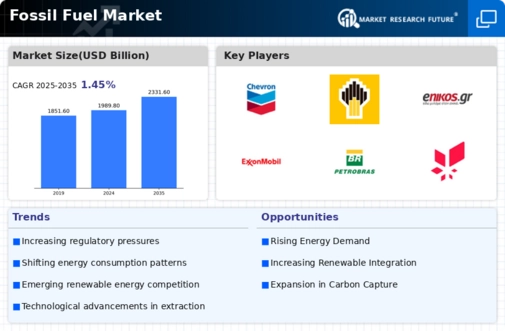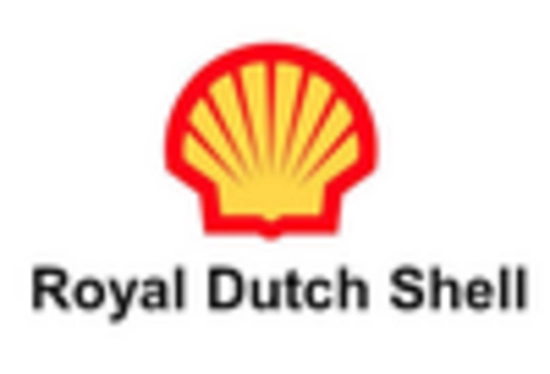Economic Growth and Energy Demand
Economic growth remains a primary driver of the Fossil Fuel Market, as rising energy demands correlate with increased industrial activity and consumer consumption. In 2023, it was estimated that global energy consumption rose by 3 percent, with fossil fuels accounting for approximately 80 percent of the total energy mix. This trend underscores the continued reliance on fossil fuels, particularly in developing economies where energy infrastructure is still maturing. As nations strive for economic development, the Fossil Fuel Market is poised to benefit from sustained demand, although this may also prompt discussions around sustainability and alternative energy sources.
Regulatory Frameworks and Policies
The Fossil Fuel Market is heavily influenced by regulatory frameworks and policies established by governments. These regulations often dictate extraction methods, emissions standards, and operational practices. For instance, countries with stringent environmental laws may impose higher costs on fossil fuel production, thereby affecting market dynamics. Conversely, regions with favorable policies may attract investments, leading to increased production capacity. In 2023, it was reported that approximately 70 percent of fossil fuel production was subject to some form of regulation, indicating the significant role of government oversight in shaping the industry. As policies evolve, the Fossil Fuel Market must adapt to maintain compliance while striving for profitability.
Investment Trends and Financial Markets
Investment trends play a pivotal role in shaping the Fossil Fuel Market, as capital flows determine the viability of exploration and production projects. In 2023, investments in fossil fuel infrastructure reached an estimated 500 billion dollars, reflecting a robust interest from both private and public sectors. However, the industry faces increasing pressure from investors to adopt sustainable practices, which may influence future funding decisions. The shift towards renewable energy sources could divert capital away from fossil fuels, potentially impacting long-term growth. As financial markets evolve, the Fossil Fuel Market must adapt to changing investor sentiments while securing necessary funding for ongoing operations.
Technological Advancements in Extraction
Technological advancements play a crucial role in the Fossil Fuel Market, enhancing extraction efficiency and reducing operational costs. Innovations such as hydraulic fracturing and horizontal drilling have revolutionized oil and gas production, allowing access to previously unreachable reserves. In 2023, the adoption of advanced technologies led to a 15 percent increase in extraction rates in key regions. These advancements not only improve the economic viability of fossil fuel projects but also contribute to the industry's ability to meet rising global energy demands. As technology continues to evolve, the Fossil Fuel Market is likely to experience further transformations, potentially reshaping competitive landscapes.
Geopolitical Tensions and Supply Security
Geopolitical tensions significantly impact the Fossil Fuel Market, influencing supply security and pricing structures. Conflicts in oil-rich regions can lead to supply disruptions, causing price volatility in the market. For instance, in 2023, tensions in the Middle East resulted in a 10 percent spike in crude oil prices, highlighting the sensitivity of the industry to geopolitical events. Additionally, nations often seek to secure their energy supplies through strategic partnerships or military presence, further complicating the landscape. As geopolitical dynamics evolve, the Fossil Fuel Market must navigate these challenges to ensure stable operations and pricing.

















Leave a Comment